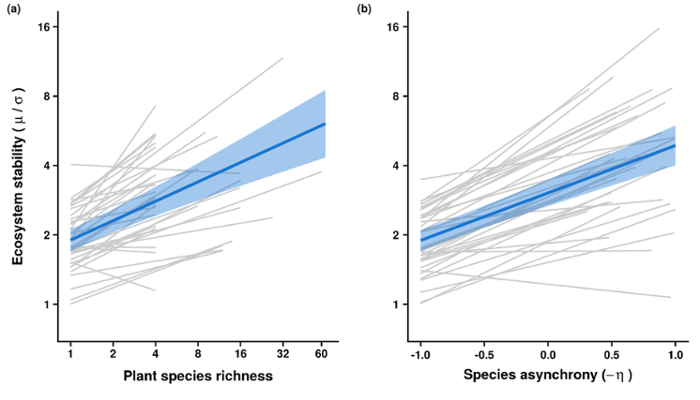
A diverse meadow is less easy to damage
Plant communities consisting of many different species are less vulnerable to attacks of plant eating animals or diseases than less diverse communities. It also helps if plant species in one community are not closely related to each other. That is the outcome of an international study published in Nature Ecology and Evolution, to which Leiden ecologist Nadia Soudzilovskaia contributed.
More than counting species
Biodiversity is much more than just counting species - it also includes diversity in how plants function and in the history of how they have evolved. Despite the growing appreciation for biodiversity and its role in buffering the impacts of vital ecosystem services, these other aspects of biodiversity are frequently overlooked. An international team of researchers examined how multiple facets of biodiversity contribute to year-to-year variation in grassland biomass production.
Caucasus
Nadia Soudzilovskaia (Department of Environmental Biology, Institute of Environmental Sciences) conducted a study on grassland biodiveristy at the Unesco natural heritage site of Caucasus, an area very rich in alpine plant species. Her data were included into the global analysis of 39 grassland biodiversity.
Combined fluctuations
The group of researchers found that year-to-year variation in plant biomass production is lowest is plant communities featuring high species richness and high phylogenetic diversity. Such communities are less vulnerable to herbivore attacks or pathogen outbreaks. Soudzilovskaia: ‘The biomass of different plant species in one area asynchronically fluctuates through the years. But combined, the different species enable an overall stable biomass production. Plant community stability enables constant and sustainable provisioning of ecosystem services and is therefore a critical feature of an ecosystem.’
The analysis also shows that diversity-stability relationships are more complex than previously thought, says Soudzilovskaia. ‘We were surprised that communities featuring low phylogenetic diversity can be very stable as well. This is the case if they are dominated by slow growing species. Our study demonstrates that multiple facets of biodiversity – taxonomic, functional, and phylogenetic – influence the relationships between community diversity and stability.’

